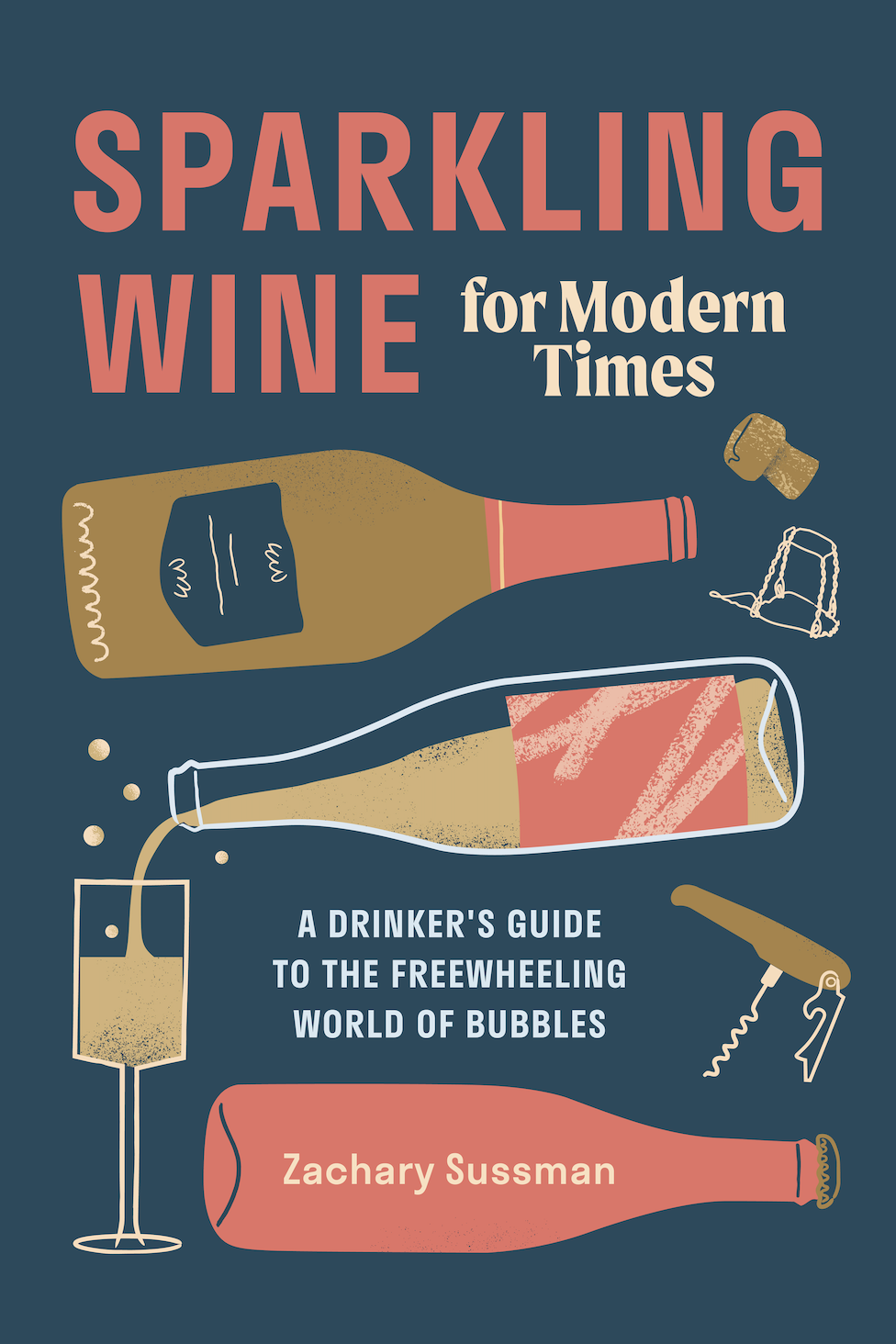Can a Wine Go Global Without Being “Globalized”?
After centuries of primarily local consumption, the wines grown within Vienna’s city limits have been thrust into the international spotlight.
September 28, 2018 | story: ZACHARY SUSSMAN | photograph: Joseph Pelleross
The scene could belong to any charmingly bucolic European wine region: row after row of vines leading up the steep slope that has been planted with grapes ever since the Romans arrived in A.D. 300. But when I turn around, there’s the Danube, shimmering in the mid-afternoon sun as it rolls past not some fairytale Middle European village, but the glass-and-steel skyscape of 21st-century Vienna.
I’ve spent the week in the city’s historic vineyards—from the suburban 21st district’s Bisamberg, across the river to the north, down to the chalky soils of the Maurerberg in the 23rd, bordering the Vienna Woods. Here in the Nussberg vineyard, which brushes up against the luxury apartments and manicured townhouses of the 19th district’s wealthy Grinzing neighborhood, the view still strikes me as surreal, the kind of urban-pastoral mashup that might otherwise come courtesy of Photoshop.
Once upon a time, the outskirts of many European capitals were fringed with vines. What remains of them today, however, is generally a few ceremonial plantings—the quaint but symbolic Clos Montmartre in Paris, for example—reserved for tourism’s sake rather than any legitimate commercial purpose. But the vineyards of Vienna are no gimmick. At just 612 hectares, it may be one of Austria’s smallest wine regions, but these historic hillsides have been a central feature of the city’s life for centuries, fueling a vibrant wine culture that still thrives today.
Nowhere is that culture more evident than at the heuriger, or local wine tavern—an institution whose origins date back to August 17, 1784, when Emperor Joseph II issued his famous Josephinische Zirkularverordnung. Removing state control of the sale of agricultural products, this ordinance gave citizens the right to sell “foodstuffs, wine and cider they have produced themselves at all times of the year, when and at whichever price they choose.” For generations, these festive taverns have allowed individual growers to sell their wine directly to the public—a perfect exchange of homespun supply and demand.
At a time when we romanticize the idea of “local wine,” it’s increasingly difficult to find the genuine article. In Vienna, however, the custom of the heuriger provides the rare example of “local wine” in the literal sense—grown, produced and consumed within a single capital.
Although Vienna offers a range of single-varietal wines—from grüner veltliner and riesling to pinot blanc, chardonnay and pinot gris—its most authentically local expression is the indigenous Viennese field-blend known as Gemischter Satz, or “mixed set.” The original drink of the heuriger, it predates the rise of Austria’s mono-varietal wine culture by hundreds of years. The style was originally born of necessity; before the arrival of modern viticultural advances, the practice of co-planting several different grapes (with their varied acidity and ripeness levels) in the same vineyard afforded growers a built-in insurance policy against poor vintages.
Throughout most of its history, the wine was produced in a way consistent with its primary purpose: to slake the thirst of a bustling city and turn a quick profit. For this reason, it’s always been customary to consume Gemischter Satz as soon after the harvest as possible—after all, heuriger literally translates to “this year” or “from the last vintage.” Served out of a carafe directly from the cask, it would typically be blended with seltzer as an early progenitor of the spritz: the archetypal simple, easy-drinking tavern wine.
These days, however, the category is being reinterpreted by a new wave of growers who are eager to share a more serious version of it with the world. In doing so, they’re raising a timely question: How can Gemischter Satz, the quintessential local wine, go global without the risk of becoming, well, globalized?
Paul Kiefer of the Mayer am Pfarrplatz heuriger and winery, which has been operating since 1683 in the same building where Beethoven once lived, summarizes the situation. “In a very short period of time, the wine went from an entry-level, high-volume product, sold and consumed locally, to a high-end product,” he explains. “Now the challenge for us is how do we continue that without losing our traditions?”
If anyone is responsible for the transformation the category is now experiencing, it would be Fritz Wieninger. The native-born son of a family of heuriger owners, he was among the first to reimagine Gemischter Satz as a premium wine. At the start of his career, in the 1990s, he had come to view the legacy of the heuriger as a mixed blessing for Vienna. While the institution had been responsible for preserving the city’s precious vineyards, he felt that its easy formula for success had discouraged Vienna from maturing in the same way as other Austrian wine regions.
“Over three decades, from the 1960s through the ‘80s, the heuriger business was booming, but the quality of the wine was poor and its public image grew worse and worse,” says Wieninger. “As producers in other regions worked harder and harder on the quality path, showing the world they could do something great, Vienna’s quality crisis only deepened.”
In 2006, he and a group of his peers formed the WienWein group, an association of growers dedicated to raising the profile of the Vienna region with a special focus on Gemischter Satz. Through their efforts, the category was officially codified into Austrian wine law in 2013 and now encompasses a wide spectrum of styles. These range from a fresh “classic” version, fermented in stainless steel to preserve the wine’s intrinsic acidity and bright orchard fruit, to powerfully complex and age-worthy single-vineyard bottles such as Wieninger’s “Rosengartl,” a blend of five different varieties planted in a single south-facing parcel within the larger cru of Nussberg.
As these top examples continue to attract the attention of sommeliers and critics—a poster prominently displayed at Mayer am Pfarrplatz, for instance, boasts of the 93 points that Robert Parker’s Wine Advocate recently awarded its flagship “Ried Preussen” bottling—Gemischter Satz is entering the international spotlight.
“We sell about 25 percent of our production at the winery, out of our heuriger, and the rest goes mainly to fine wine shops and restaurants in 21 different countries,” says Rainer Christ, a founding member of the WienWein group, who organically farms several parcels of old Gemischter Satz vines. “This is totally new for Vienna. In the past, everything was consumed within the city limits.”
The upward trajectory Christ is describing is one that several “undiscovered” wine regions have followed of late—a surprising reversal of the globalization narrative that we took for granted only a decade ago. That story went something like this: In an ever-commercialized wine market, the same roster of lucrative “international” grapes (think chardonnay and merlot) threaten to stamp out authentic indigenous specimens like Gemischter Satz. As it turns out, something far more insidious took place. Rather than erase the native and obscure, we’ve come to fetishize them, pushing so many unique regional wines (see: Jura, Colares) beyond reach of the rural communities to which they once belonged.
But Vienna is not one of those cautionary tales. Despite the enormous chartered buses that regularly flock to some of the more touristy destinations, the reality is that its famous wine taverns—whether operated by small families or top winemakers like Rainer Christ—remain a deeply ingrained ritual of everyday life in the city, and still serve a fundamentally Viennese clientele. “For us, it’s a neighborhood situation,” Christ tells me. “To a lot of our clients, our heuriger is something like their second living room.”
In fact, according to Paul Kiefer, the renaissance that is redefining the city’s wine has also renewed interest in the institution of the heuriger, which has undergone an upgrade of its own. “The new culture of winemaking is bringing people back to the heuriger,” he says, noting that food quality has improved as well, with a heightened focus on local products and seasonal ingredients. “Ten years ago, everyone was just ordering our simple tap wine, for a spritz or whatever,” says Kiefer, “but now most people are ordering by the bottle. We’re selling single-vineyard wines by the glass, and we even want to offer mature wines at the heuriger, which is really crazy, since the whole idea was always to serve wine from the current vintage.”
Of course, much of what has made this revival possible is Vienna’s unique status as both a viticultural region and a major cosmopolitan center. In the evolution of so many rural areas with agricultural economies, there eventually comes a time when the “local wine” can no longer be afforded by actual locals. But the Austrian capital enjoys an affluent population of nearly two million thirsty citizens, for whom it’s only natural—if not an expression of hometown pride—to spend 30 euros or more on a world-class bottle sourced from a vineyard up the road.
On my last evening, after a meal of velvety pork knoedel (Austria’s contribution to the dumpling family) and savory tafelspitz (the classic Viennese dish of boiled beef and root-vegetables), Paul Kiefer takes me out into the vines. From the top of the Nussberg, with the lights of the entire city spread out below, we can make out the gothic spire of St. Stephen’s cathedral, then the neon spokes of the Riesenrad Ferris Wheel as the Danube flows off toward Eastern Europe. Under the spell of the view, I can’t help but marvel at how many generations of growers have earned a living from these hills, and how incredibly rare it is that such a tradition still survives—even as part of it now migrates outward into the rest of the world.






